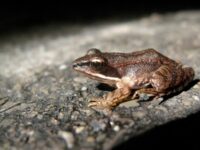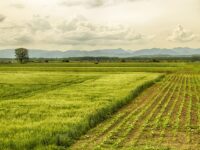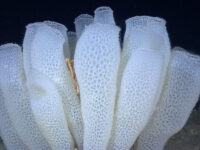Forest fires have taken over the news. The past year has seen major wildfires on multiple continents. Climate change stands at the center of this crisis, especially in light of the United Nation’s COP26 Climate Summit taking place at the end of October. Unfortunately, forest fires are not the only thing we should be worrying about. Forest freezing has also become a significant obstacle that forest ecosystems have had to overcome.
As the climate warms, freeze-thaw cycles increase. A freeze-thaw cycle occurs when the soil repeatedly undergoes periods of melting and subsequent freezing. Frequent freeze-thaw cycles damage root systems and affect the growth of trees and plants as well as microbial organisms. As the global climate temperature rises, these freeze-thaw cycles become more and more frequent.
Frequent freeze-thaw cycles damage root systems and affect the growth of trees and plants as well as microbial organisms.
In many places, the early arrival of spring has led to longer growing periods and seemingly great benefits for plants and forest life. However, the warmer temperatures early on mean budding plants may be exposed to temperature drops later on in the season. These unpredictable temperature fluctuations are causing harmful effects on plants in general.
A case study from the Hubbard Brook Experimental Forest in New Hampshire showcases these issues first hand. Researchers observed this northern forest ecosystem over two years to observe the effects of colder winters and warmer summers on nitrogen uptake by plants. These researchers found that freeze-thaw cycles have damaged the root systems of trees. Not only that, but the trees also had significant decreases in nitrogen uptake. Nitrogen is a necessary nutrient for these trees, and the displacement of nitrogen into the soil can have negative impacts on tree growth during the growing season.
Snowpack is a natural protector of trees in these northern forests. Snowpack occurs when layers of snow accumulate and remain as covering for extended periods of time. A group of researchers conducted a five-year experiment where they removed snowpack from trees in the first weeks of winter. They observed that reducing the snowpack increased soil freezing and harmed tree growth within that five-year period. The implications of this study show how the projected decreases in snowpack due to global warming may significantly impact tree growth.
Importantly, trees have their own methods for combating these harsh temperatures. A study conducted by Charrier et. al. in 2017 observed freezing dynamics in the alpine timberline, which is the highest elevation that trees can grow and withstand the cold temperatures. Upon freezing and thawing, quite complex water hydraulic changes occur within the trees. The researchers discovered that the trees exhibit physiological decreases in their stem diameters, potentially to protect themselves from greater amounts of ice buildup. The diameters went back to normal after thawing. Additionally, they noticed that bubble formation occurred following ice formation, which may be related to gas exchange. These changes are just some of the ways trees and other woody plants protect themselves from harmful drops in temperature.
To protect trees from suffering root damage, budding too early, and tissue damage, many things can be done. In personal gardens or trees around your homes, you can add excess mulch to keep the soil from freezing at fast rates and conserve soil moisture. Additionally, you can wrap small trees with burlap during the winter season to keep the moisture in the leaves. Proper winter pruning and shaking trees after heavy snow can protect smaller trees from the weight of winter precipitation.
To protect trees from suffering root damage, budding too early, and tissue damage, many things can be done.
As strides are made to combat global warming, the future protection of trees from forest freezing is looking up. For now, it is important to learn about how climate change impacts winter climate events that are often overlooked.
Plant Physiology (2017). DOI: 10.1104/pp.16.01815
Journal of Experimental Botany (2016). DOI: 10.1093/jxb/erv486
Climatic Change (2007). DOI: 10.1007/s10584-007-9322-8
Water (2019). DOI: 10.3390/w11102122
Global Change Biology (2018). DOI: 10.1111/gcb.14420
Biogeochemistry (2018). DOI: 10.1007/s10533-018-0422-5






